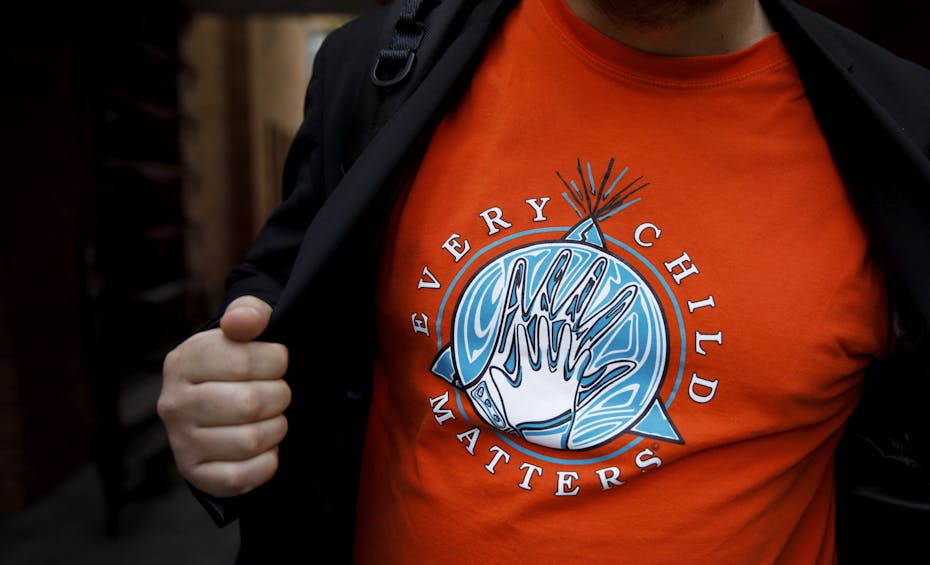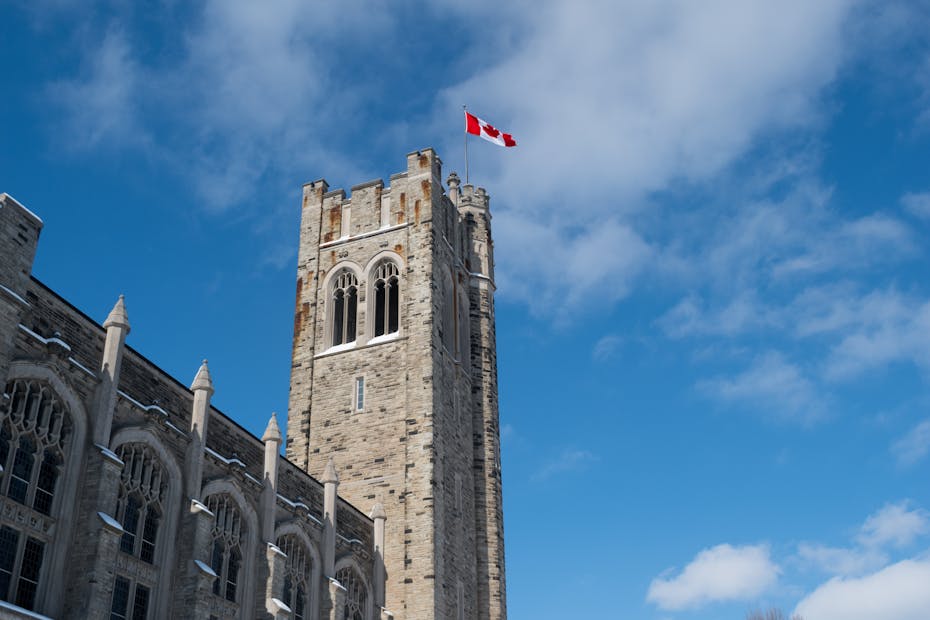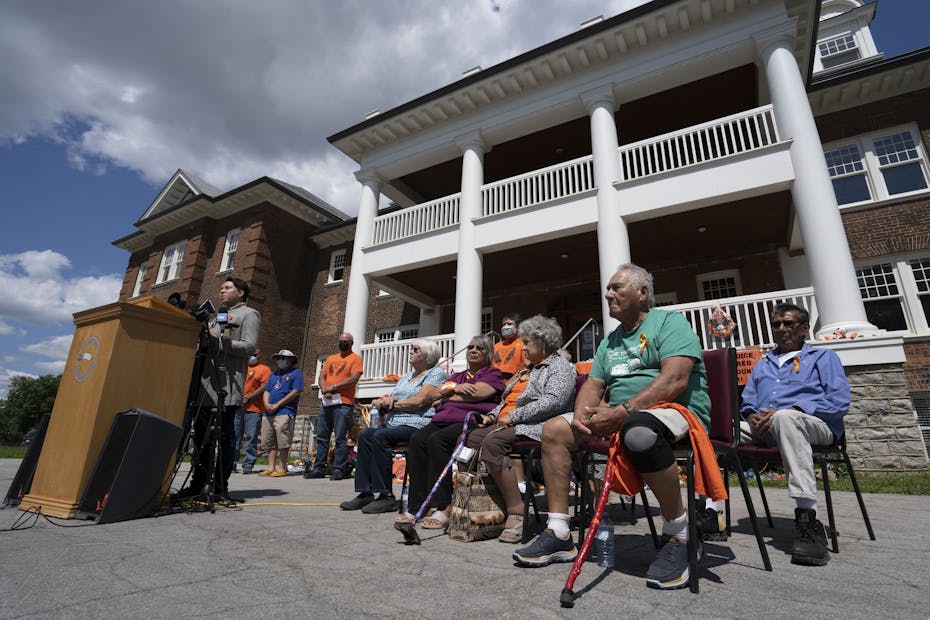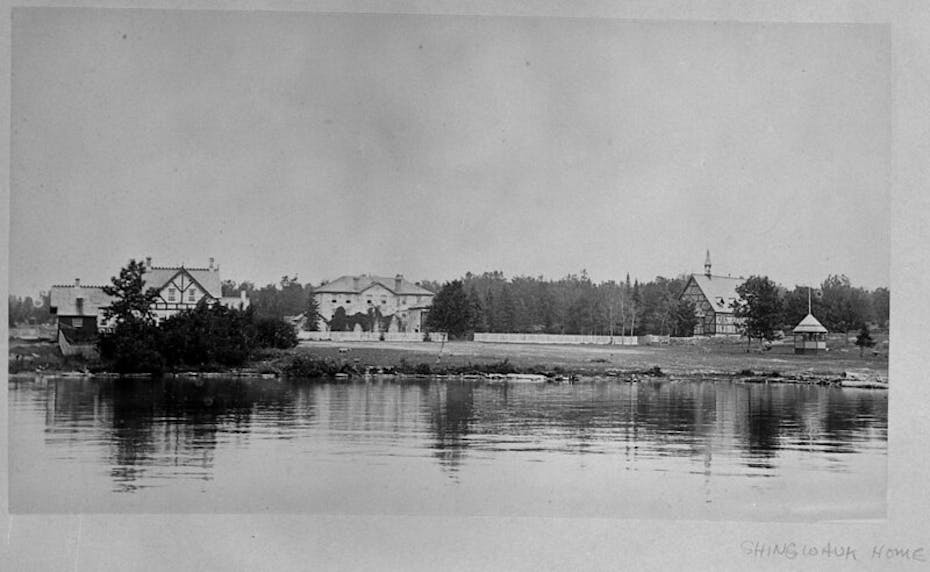
THE CANADIAN PRESS/Cole Burston
Universities pride themselves on their founding stories. These stories, however, tend to privilege dominant institutional narratives and reproduce settler memories — and erase institutional participation in the dispossession of Indigenous Peoples from their lands.
In our preliminary research on Indigenous presence at Western University with Sally Kewayosh, a filmmaker and instructor with the Faculty of Information and Media Studies, we find compelling reasons to retrace the history of universities and expose Indigenous Peoples’ ongoing contributions.
Grappling with Western University’s origins, and the origins of all universities, means coming to a deeper understanding of how these origins are steeped in colonial and racist assumptions — and bolstered by networks connecting different branches of colonial education.
At the same time, it’s critical to acknowledge the agency of Indigenous Peoples who saw the university as a place of opportunity for their Nations, and to revisit historical promises.
Early Canadian universities
As the country shifts attention to the National Day for Truth and Reconciliation, we call for universities to revisit their founding stories with a critical eye to how settler colonialism and Indigeneity have shaped them.
Many universities in what we now call Canada were founded within Christian traditions that demonstrated zeal for the assimilation of Indigenous Peoples into Euro-Christian traditions.
Over the course of the 19th and early 20th centuries, universities began to shed Christian religious and denominational aims — yet they continued to benefit from appropriated lands and accrued financial capital.
As the Government of Canada ushered Indigenous Peoples onto reserves, ramped up the residential school system and imposed other legal restrictions, universities
contributed heavily to remaking Indigenous Lands into the political nation state and developing white settler prosperity. Universities reinforced settler ideologies in the education of Canada’s political and thought leaders.
Western University’s founding story
Part of our early findings suggest Indigenous Peoples have an enduring presence at Western, despite colonial attempts to overlook them.
As records from the Anglican Diocese of Huron show, on Feb. 20, 1877, an “Association of the Professors and Alumni of Huron College” gathered in London, Ont., to encourage Isaac Hellmuth, the Anglican Bishop of Huron Diocese, to work towards building an “undenominational School of Arts, Law, Medicine and Engineering.” A year later, on March 7, 1878, Western University was born.
But left out in many accounts is the role settler colonialism and promises of Indigenous education played in securing the university’s early years.

(Shutterstock)
Isaac Barefoot
According to the resolution from that 1877 meeting, Isaac Barefoot was one of 42 men gathered to encourage Hellmuth to work towards the new university.
Barefoot was an Onondaga man from Six Nations of the Grand River. As a child he attended the Mohawk Institute, Canada’s oldest residential school, and later trained to become a teacher at Egerton Ryerson’s Normal School.
From there, Barefoot went on to teach at the Mohawk Institute. He was eventually ordained an Anglican priest at Western’s founding College, Huron, in 1878.

THE CANADIAN PRESS/Peter Power
Barefoot is a complex figure entangled in asymmetrical colonial power relations. His presence at this meeting also reminds us that the vision to train Indigenous Peoples was an early rationale for creating universities: For example, university founders in the United States used relationships with Indigenous Peoples to raise funds for establishing universities that included the promise of Indigenous education deeply entwined with colonial aims.
Indigenous Peoples and building universities
Researchers at the Six Nations of the Grand River Lands & Resources Department and scholars document how McGill University borrowed government-controlled Indian Trust Funds.
Educational studies researcher Rosalind Hampton references McGill’s use of the Indian Trust Fund and critiques intersections of settler colonialism, legacies of slavery and anti-Black racism at the university in Black Racialization and Resistance at an Elite University.
Hellmuth applied to the New England Company — which ran the Mohawk Institute — for funds to start Western. The vision for the funds, according to company records, was “the training of both Indian and white students for the ministry.”
In 1879, as the newspaper of the Anglican Church of Canada reported, Hellmuth approached Anishinaabe Anglican missionary Henry Pahtahquahong Chase to help him “solicit aid on behalf of the Western University.”
An Aug. 23 article, “The Indians and the Western University,” detailed how Chase hoped “to get admission for their youth into the institution, so that his people would have a chance of obtaining good learning.”
Two years later, in July 1881 the newspaper reported Hellmuth worked with another Anishinaabe missionary, Keshegowenene (John Jacobs) to seek more funds for the university. This was while visiting Bkejwanong Unceded Territory.
According to this report, at the meeting, Hellmuth said: “When the Western University is opened, Indians from different parts will continue to avail themselves of the grand privileges of obtaining a university education.”
Ties with residential schools
While Western’s founder recruited Chase and Keshegowenene to help with his fundraising campaign, Huron’s first librarian, Edward Francis Wilson was involved in the residential school movement.
Common social and financial Anglican networks were instrumental in the beginnings of Huron College, Western University and Shingwauk Residential School in Sault Ste. Marie, Ont. After attending Huron, Wilson moved to Sault Ste. Marie where he helped establish the Shingwauk Industrial Home.

(BiblioArchives /LibraryArchives/Flickr), CC BY
A vision for a Shingwauk school first emerged from Chief Shingwaukonse’s vision for a “Teaching Wigwam” at Garden River where his people and settlers would learn together.
But Wilson promoted assimilation and the school “gradually became absorbed into the Canada-wide Indian Residential School system,” designed to effect cultural genocide.
In 2006, the Shingwauk Education Trust and Algoma University College signed a Shingwauk Covenant — an agreement to work together to realize Shingwauk’s vision for Indigenous education and research.
The project involved a “Survivor-driven reclamation of the former Shingwauk Indian Residential School” resulting in a collaborative project to create the Shingwauk Residential Schools Centre (SRSC).
Promises, Indigenous presence
Our research into Western’s history continues. Importantly some of this work engages faculty and undergraduate students.
We are sharing these early findings because, as our work to date demonstrates, Indigenous histories and how universities intersect with colonial aims often go unrecognized in university collective memories.
We look forward to sharing stories of Indigenous presence in the form of film, a website and publications. Every public institution should embark on similar decolonizing journeys.![]()
Thomas Peace, Associate professor, Department of History, Western University and Candace Brunette-Debassige, Assistant professor, Faculty of Education, Western University
This article is republished from The Conversation under a Creative Commons license. Read the original article.










